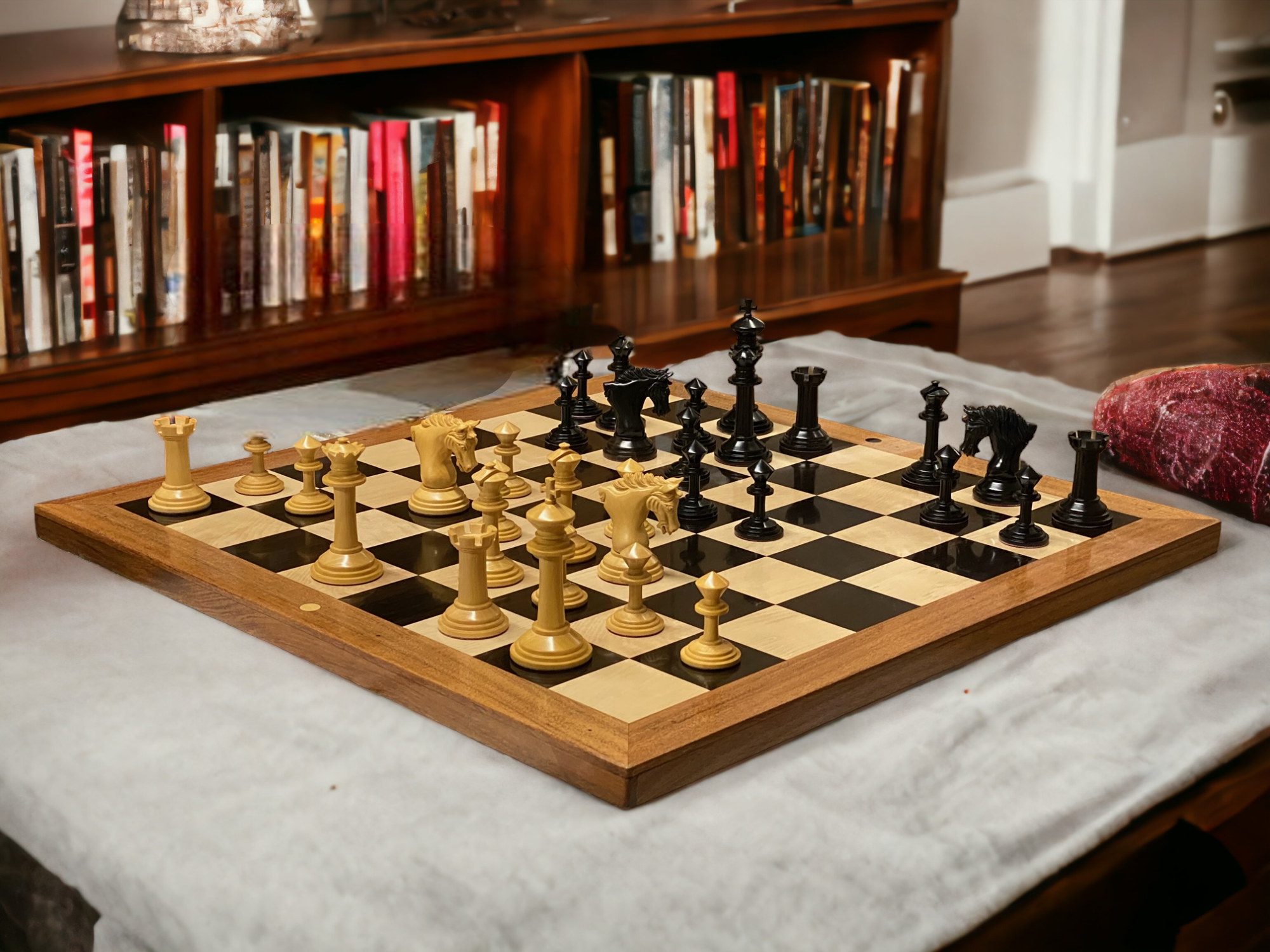Exploring the Pivotal Realm of Chessboard Layout:
Beyond its status as a mere board game, chess stands as a testament to the boundless capacity of the human mind, where intellectual prowess converges with strategic finesse. Yet, within this realm of mental acuity and strategic mastery, a central and pivotal element reigns supreme—the chessboard layout.
This comprehensive guide embarks on a journey into the very essence of chess, peeling back the layers of complexity that enshroud the chessboard layout. Much more than a mere grid of 64 squares, the chessboard layout is a canvas upon which centuries of history, strategic brilliance, and sheer artistry unfold. Our exploration ventures deep into the historical corridors, uncovering the roots and evolution of the chessboard layout. From the ancient game of chaturanga in India to its migration across Persia and Europe, we unravel the threads that weave the chessboard layout into the rich fabric of cultural heritage.
Historical Evolution
Exploring the historical evolution of the chess board layout unveils a captivating journey through time. The roots of chess stretch back to ancient India, where the precursor, chaturanga, graced an 8x8 board. As the game journeyed across Persia and Europe, the very design of the chess board transformed. The iconic alternating pattern of light and dark squares emerged as the prevailing standard, bestowing aesthetic allure and practical clarity upon the game. This evolution, a testament to the game's cultural diffusion, enriched chess with historical depth and laid the foundation for the visual harmony that characterizes every match on the chequered battlefield. The chess board layout, a silent witness to centuries of strategic duels, carries within its squares the echoes of its ancient origins and the resonance of a game that has transcended borders and eras.
The Arrangement of Pieces:
The chessboard layout comes alive with the placement of its iconic pieces. At the game's outset, the board is set with 32 pieces—16 for each player. Pawns, the foot soldiers, form the front line, ready to defend and initiate strategic advances. Rooks, knights, and bishops take their positions in the corners, while the queen and king stand at the center, forming a regal yet vulnerable duo.
The placement of pieces on the chessboard layout is not arbitrary; it is a choreography that sets the stage for the unfolding drama. Pawns, the humble infantry, advance cautiously. Rooks in the corners are prepared to control open files and ranks. Knights, with their unique L-shaped movement, find optimal positions toward the center. Bishops, masters of diagonals, strategically position themselves to cover vital squares. The queen, a powerful force, takes center stage, poised for dynamic maneuvers, while the king, the linchpin of the setup, seeks refuge and strategic positioning beside the queen.
Strategic Considerations:
The strategic considerations embedded in the chessboard layout elevate it from a mere grid of squares to a dynamic battlefield. Controlling the center emerges as a key principle. Placing pieces, particularly pawns and knights, in the central squares facilitates better mobility, influencing the game's direction and providing a solid foundation for strategic maneuvering.
Pawn structure is another critical aspect of the chessboard layout. A solid pawn structure forms the bedrock of a resilient defense. Recognizing potential pawn weaknesses and avoiding structural vulnerabilities become imperative for players aiming to fortify their chessboard setup.
Piece coordination is pivotal for effective gameplay. Harmonizing the movement of rooks, bishops, knights, and the queen creates a formidable, cohesive position. Connecting rooks, coordinating bishops to cover distinct diagonals, and ensuring all pieces support each other contribute to the overall strength of the chessboard layout.
The Artistry of Chess Board Setup:
Beyond the strategic considerations, the chessboard layout embodies a unique artistry. Players, much like artists, paint their strategic visions on the canvas of the chess board. Recognizing the role of each piece in this intricate ballet sets the tone for the battle that is about to unfold, making the initial arrangement a critical aspect of the chess experience.
The alternating light and dark squares pattern adds visual appeal to the chessboard layout. It not only creates a visually pleasing aesthetic but also aids players in discerning the position of pieces easily. The checkered pattern, a hallmark of chess boards, enhances the overall playing experience.
In competitive play, adherence to standardized chessboard layout dimensions is crucial. The World Chess Federation (FIDE) specifies the standard size of a tournament chess board, ensuring uniformity and fairness in competitive settings. The dimensions, including square size and board height, contribute to the consistency of the chess board layout across various competitions.
Chess Board Layout and Cognitive Benefits:
Setting up the chess board layout and engaging in a chess game is not just an intellectual pursuit; it also offers numerous cognitive benefits. Studies have shown that playing chess enhances cognitive skills such as memory, concentration, and problem-solving. The visualization required to plan moves on the chess board layout stimulates the brain, promoting mental acuity.
Additionally, chess encourages strategic thinking and foresight. Players must anticipate their opponent's moves and plan their own, fostering a strategic mindset. The complexity of the game, coupled with the intricacies of the chess board layout, challenges players to think critically and make decisions that impact the outcome of the game.
The chess board layout is not just a playing surface; it is a stage for a battle of minds, a canvas for strategic artistry, and a symbol of centuries-old traditions. Understanding the historical evolution, the arrangement of pieces, strategic considerations, and the artistry involved in chess board setup provides a profound appreciation for this timeless game. As players set up their pieces and make their moves, they partake in a tradition that transcends borders and generations—a tradition where the chessboard layout becomes a symbolic battleground for the pursuit of intellectual excellence.



